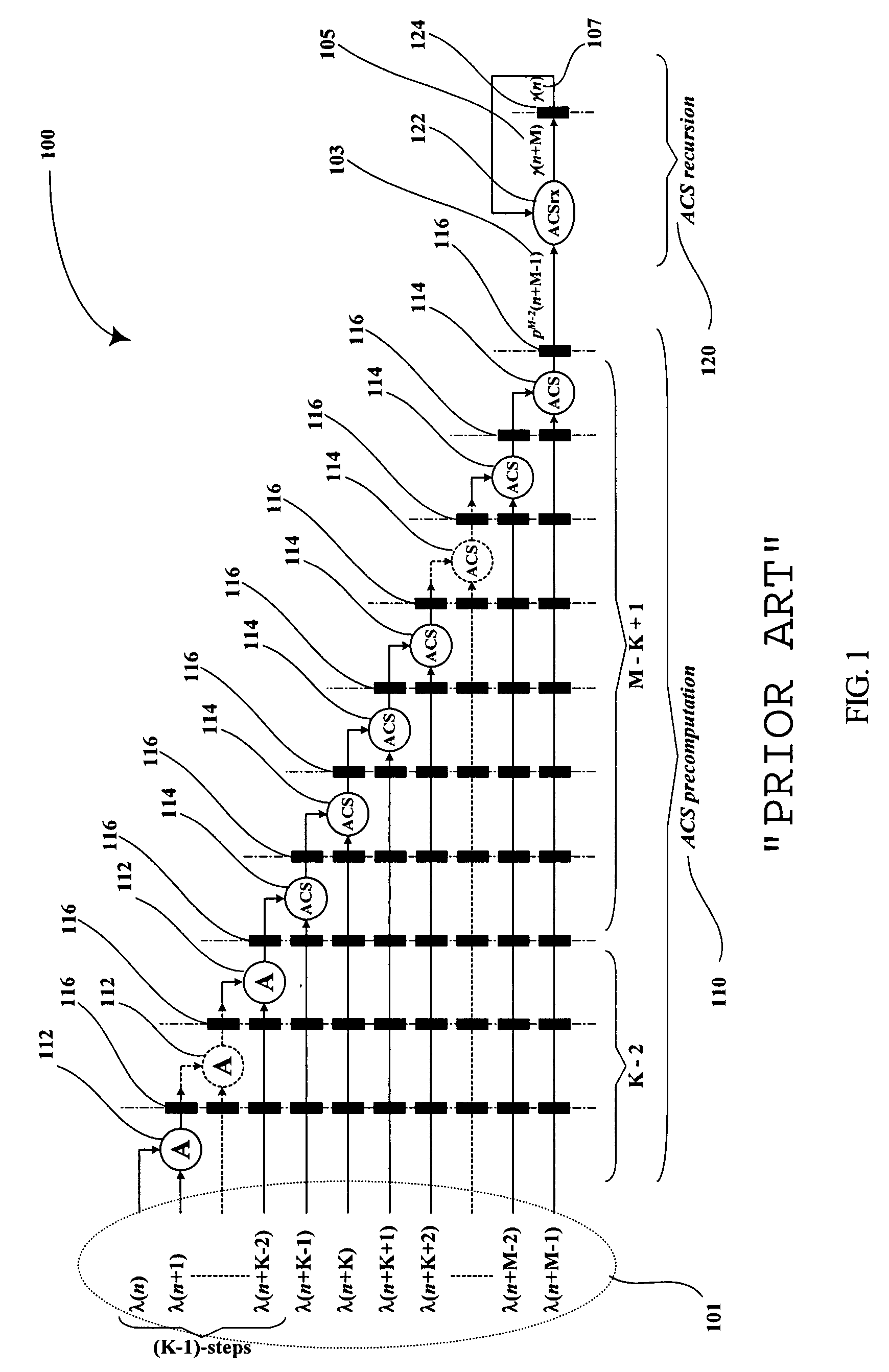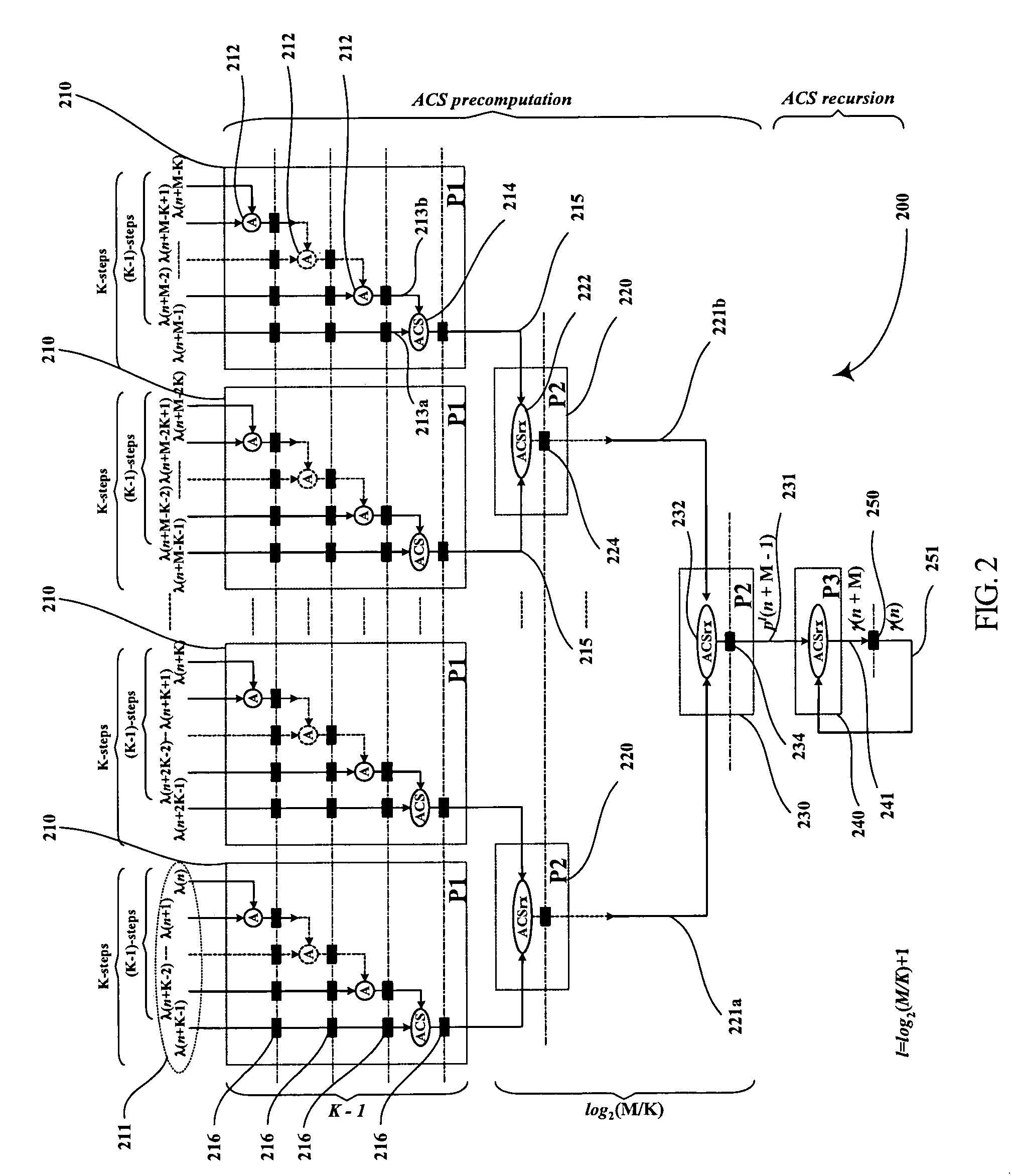Low-latency architectures for high-throughput Viterbi decoders
a viterbi decoder and low-latency architecture technology, applied in the field of digital communication, can solve the problems of limited decoding speed of viterbi decoding algorithm, iteration bound, long latency of look-ahead acs precomputation, etc., and achieve the effect of reducing the latency of acs precomputation and high throughput ra
- Summary
- Abstract
- Description
- Claims
- Application Information
AI Technical Summary
Benefits of technology
Problems solved by technology
Method used
Image
Examples
Embodiment Construction
[0024]In the look-ahead technique, the combined branch metrics can be computed outside of the ACS recursion. This allows the ACS loop to be pipelined or computed in parallel. Thereby, the decoding throughput rate can be increased. This is an advantage of the look-ahead technique, which has been explored for Viterbi decoding algorithm and the dynamic programming problems. FIG. 1 illustrates that a circuit 100 consists of ACS precomputation part (circuit 110) and ACS recursion part (circuit 120) for traditional M-step look-ahead Viterbi decoding circuit.
[0025]The ACS precomputation part (circuit 110) consists of 2-input adders (circuit 112), radix-2 ACS circuits (114), and pipelining latches (circuit 116). Each radix-2 ACS circuit consists of two 2-input adders and a radix-2 compare-select (CS) circuit. Circuit 110 uses M-parallel incoming branch metrics (signal 101) for its ACS precomputation. For the first (K-1)-steps branch metrics inputs, compare-select operations are not necessar...
PUM
 Login to View More
Login to View More Abstract
Description
Claims
Application Information
 Login to View More
Login to View More - R&D
- Intellectual Property
- Life Sciences
- Materials
- Tech Scout
- Unparalleled Data Quality
- Higher Quality Content
- 60% Fewer Hallucinations
Browse by: Latest US Patents, China's latest patents, Technical Efficacy Thesaurus, Application Domain, Technology Topic, Popular Technical Reports.
© 2025 PatSnap. All rights reserved.Legal|Privacy policy|Modern Slavery Act Transparency Statement|Sitemap|About US| Contact US: help@patsnap.com



